
Shopping: New E-bike Options
Is there a bike type that does not come with a motor option? Not many. I have yet to see a child’s tricycle with a motor, but I wouldn’t be surprised if someone has not built one. E-bike technology has advanced immensely over the last few years. Bike design, motor, and battery technology have improved so much that many bikes don’t even look like they are electric.
Options abound, and it can be confusing and even intimidating at times. One thing is clear: ride the bikes you like before buying.
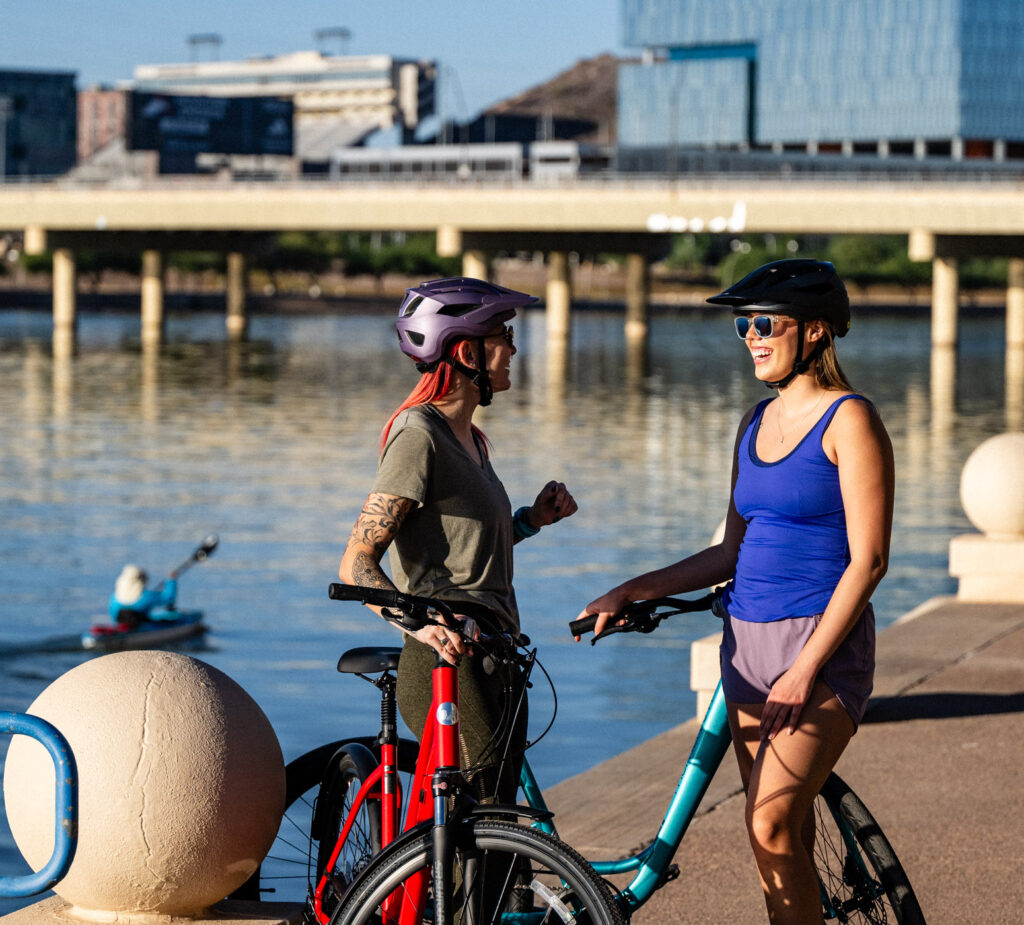
The following are a few decision steps you can take to help narrow down which bike suits you:
Cost
New E-Bikes start around $600. Below $600, they become very unreliable. Electric Mountain bikes top the price range, mainly due to all the technology, and can cost over $16,000. Set a budget or range before you set out for some demo rides. This will help you focus on the right bike first and not get overwhelmed by all the options.
Weight
Remarkably, everyone’s favorite Schwinn bike of the past weighed over 40 pounds. The newest E-Road bikes, such as the Specialized Creo, are under 30 pounds. The average for all E-Bikes is 45-65 pounds. Hub drive-equipped bikes average the higher end, with most bikes around 60 pounds or more. Center-drive-equipped E-Bikes are primarily under 50 pounds. Some early E-Bikes topped out at over 80 pounds, with big motors and lead-acid batteries—no more. E-bikes are light and nimble now, with some hard to even identify as pedal-assisted. Visit the shop and lift a few – you will be surprised.
Performance
Motors have evolved into two distinct types: center drive and hub drive. Center-drive motors are most common on higher-end bikes, focused on the best ride feel and bike handling ($2,500 and up). The center-drive motor is mounted directly on the pedals, where power can be regulated to the rear wheel through the gears. Placing the motor in the center makes the bike feel and handle better. Hub-mounted motors, on the other hand, are built into the wheel. Hub drive motors are mostly found on casual and urban bikes (under $2,500). The motor in the wheel makes the bike a bit heavier and less agile. However, you get a throttle with most all the hub drive-equipped E-Bikes. Battery technology seems to be settling out, so the average E-Bike will go 35-55 miles on a single charge when set on the lowest support mode. Batteries are expensive ($800), averaging about 500 Wh on most E-Bikes. As you would expect, if you spend more, you go farther. Round out your search with how you will ride the bike, such as mountain, urban, commuting, etc.
Once you have decided on your budget, concerns about weight, and the level of performance, look at the type of bike you want. Unless, of course, like me, you build a stable of bikes and need a bike shop to support your habit.
Next, narrow your search to the type of bike you want.
Mountain Bikes – Rugged

Mountain bikes handle rugged terrain. Their design is focused on control and handling a variety of challenging trails. They handle more demanding obstacles and are well-suited for the more adventurous.
A broad definition provides an assortment of setups for an E-MTB. Maybe you want top performance and will push the bike to the limit. If this is you, look for a full suspension E-MTB and expect to spend at least $3,000. All full-suspension E-MTBs come with larger tires, a shock in the back, a suspension fork, and a sturdy frame. Hardtail mountain E-Bikes are less expensive and well suited for beginner and novice riders, starting at $1,200. They are characterized by a fatter tire than a road bike, a front suspension, and a sturdy frame, but no shock on the rear. Some customers prefer a mountain bike’s riding position and rugged design over an urban bike. With the hardtail setup, adding a rear rack, fenders, and other accessories to equip your bike for on and off-road use is easy. Class One, 20mph, dominates the mountain bike category to keep the bike legal on trails.
Ready for the more adventurous rider, E-MTBs are the best choice for those who want to get out in the dirt and play.
Urban & Recreational Bikes – Versatility
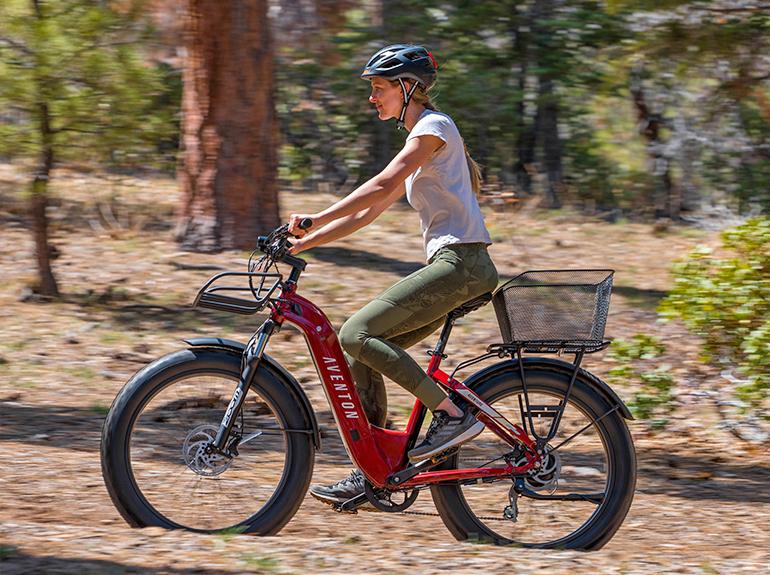
Urban bikes are easily the most popular category of electric bikes. They can do almost everything: ride in the neighborhood, take your favorite bike path, or bring it with you in the RV.
Easily, urban and recreational E-Bikes are our best-selling bikes. Unlike mountain bikes, they are designed for road or graded dirt road use, predominately Class 3, 28mph, and not generally legal on trails, but great on designated bike paths. Many come equipped with a front suspension fork for comfort. The average price for this category is $1,800 (hub drive) to $3,000 (center-drive). Hub drive motors are the most common choice because of their lower cost. Our most popular brand is the Aventon. Aventon uses a hub drive motor, keeping the cost down while enhancing the overall utility of the bike. However, the hub drive comes with a bit more weight and a tendency for the bike to pull a little harder than needed for a good cardio workout. Moving up to a center-drive model provides better control over the application of power (pedal assist) but no throttle. Our most popular center-drive model is the Specialized Vado.
Many bikes can be categorized as urban. Fenders, lights, seat suspension, front suspension forks, racks, and baskets are typical. Some have smaller-profile tires focused on road use, while others have larger tires suitable for rougher terrain.
Call it urban, trekking, recreational, casual, or commuter, this category of E-Bike fills many needs for most customers.
Road & Gravel Bikes – Sporty
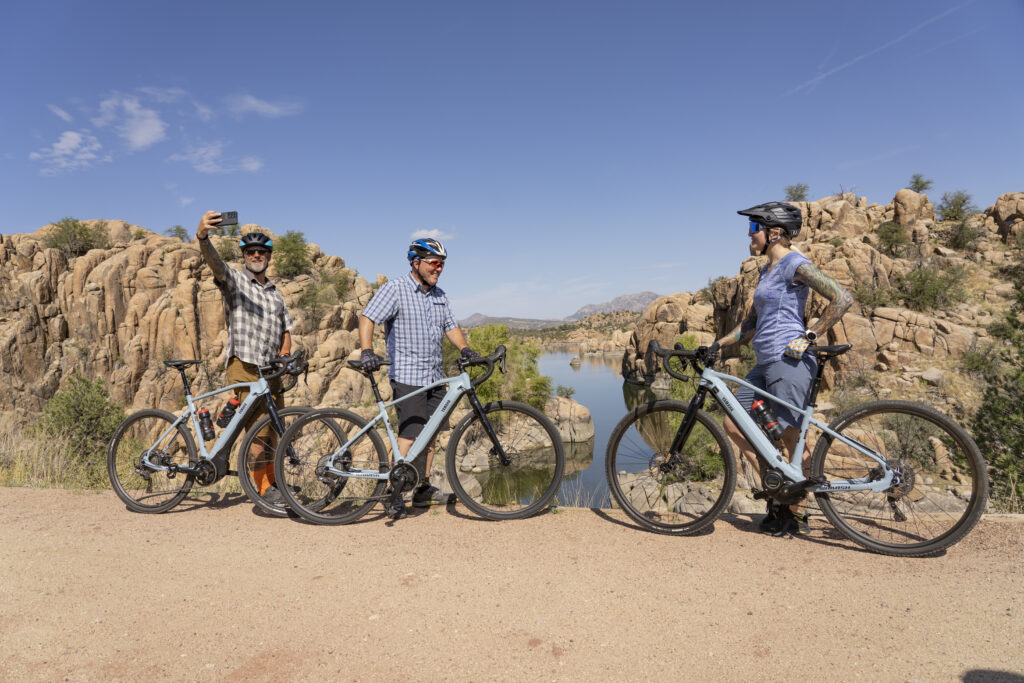
Lighter than a mountain bike, gravel bikes are sturdy road bikes built to take on dirt roads. They are much sportier than road bikes but more agile than mountain bikes.
Looking for lighter weight and sporty E-Bike? Check out the latest E-Road bikes. This category starts at around $2,500 and can go up to over $13,000. E-Road bikes, like the Specialized Creo, focus on light and fast. They come in gravel designs, which include larger profile knobby tires and moderate suspension. Or, look for the most streamlined models designed primarily for the road. Lighter styles, like the Creo SL, have a lower wattage motor and smaller battery, weighing in at as little as 27 Lbs. Alternately, choose a gravel version for a larger motor and battery. Gravel models, like the Cannondale Topstone Neo, can come with full suspension, affording a light and fast dirt road adventure.
Outfit your E-Road bike with fenders and racks, and you’ll have a trekking bike ready for a long adventure. Gravel models are well-built for trekking, too, and suspension adds comfort to your ride.
Folding & Compact Bikes – Easy To Transport

Folding e-bikes are compact for easy storage and transport, yet they are made to accommodate short and tall riders.
Folding E-Bikes start at around $700 with the Gotrax and run up to $2,100 with the Magnum Premium. Nothing is better than popping your E-Bike in the trunk and riding wherever you land. I love taking my folding E-Bike to Sedona, for example, and riding past all the cars waiting to drive to their destination. Tired? No problem; use the throttle. Want more exercise? Pedal with the bike power turned off or on the low assist level.
Folding E-Bikes also have a great home storage advantage since they occupy a much smaller space than a full-size bike. Since they are generally smaller, they can accommodate a broader range of rider heights as they are built for full adjustability. Some models, like the Magnum Premium, are a bit larger but great for varied terrain, like dirt and grass. Either way, a folding option adds convenience for storage, transport, and versatility for various riders.
Adult Trikes – Balance
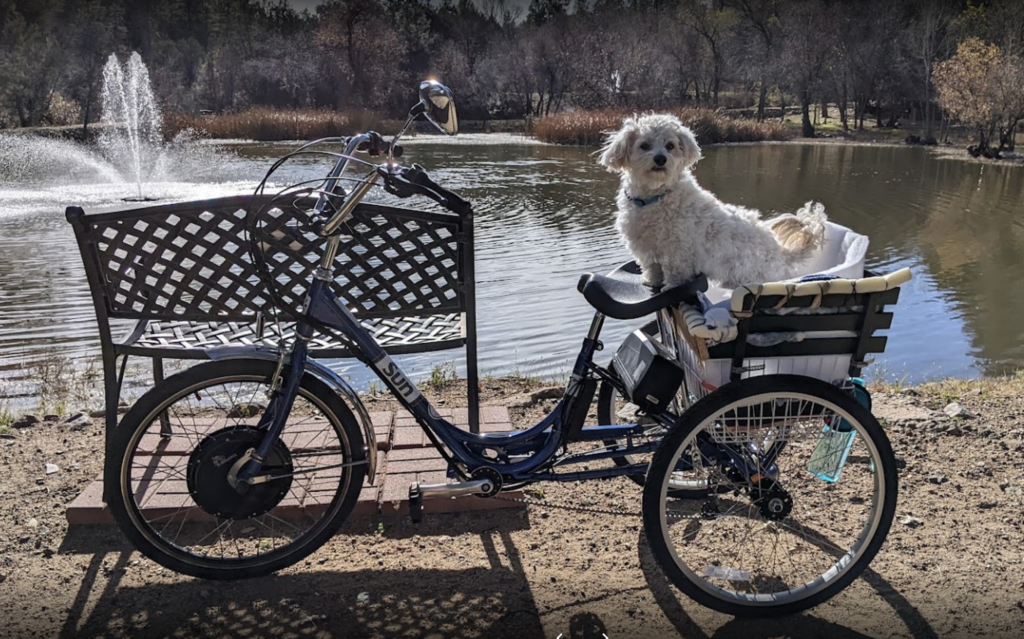
E-trikes are the perfect balance choice and very handy for cargo. They are factory-made or available as conversion kits. We can install a kit for you and work on any brand or model.
E-Trikes come in factory-built models and conversion kits. Installing a conversion kit introduces many options. You can find your favorite trike model and configuration, then add the E-Bike conversion kit of your choice. Choose a small trike with 20″ wheels or a larger trike with 26″ wheels. Some trikes, such as the Atlas Cargo trike, are great for the heavier rider, with a maximum capacity of 500 pounds. Recumbent trikes help those who want a more comfortable riding position. Even the hand-trike may be motorized.
E-trikes are a great mobility option. Unlike a mobility scooter, you get to choose your level of exercise—use just the throttle, minimal pedal assist, or maximum pedal assist. Trikes are handy, too, especially for trips to the store, because you can carry cargo, like Fido.
Recumbent E-Bikes and E-Trikes are mostly custom-built. Variety abounds in the recumbent segment. You can find two-wheel models, three-wheel models, hand-operated models, and even off-road models. Recumbent riding offers a more relaxed position on the bike, taking stress off your back. With a three-wheel model, balance issues are eliminated, improving bike navigation. Recumbents are a good choice for rehabilitation, needing to get out on a bike again, or just for relaxation.
Commuter Bikes – Speed & Range
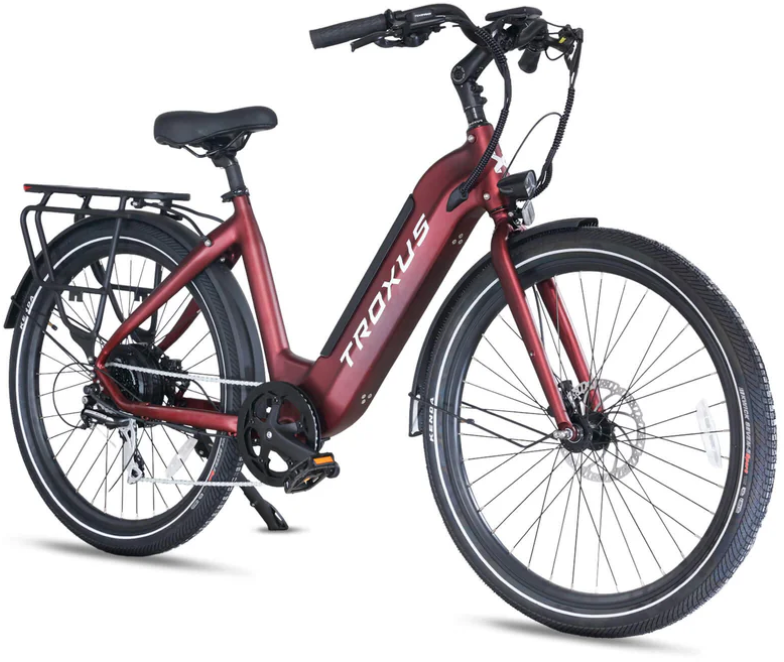
Commuter e-bikes have sturdy all-surface tires, larger batteries, lights, fenders, and a rack to make commuting a breeze.
Our category leader in the commuter group is the Troxus Trax. The Trax is moderately priced and specially equipped for the commuter. It is available as a step-through or step-over, making it appropriate for all commuter needs.
Commuter-style E-Bikes are usually outfitted with fenders, lights, a rack, disc brakes, and a suspension fork. Commuters, like the Specialized Vado, come with a larger motor and battery and will assist up to 28mph. They are meant for paved roads but may be ridden on graded dirt roads, like canal and bike paths. Being Class 3, they are not allowed on many off-road trails. Hub drive models have a throttle, but it will only propel the bike up to 20mph and drain the battery faster.
Ride to work, charge up, and ride home. If you pedal at the lowest assist level, most E-Bikes will go 30+ miles easily—that’s a long ride.
Cargo Bikes – Urban Carryall

Go shopping, take the kids on a ride, commute. Cargo e-bikes can be customized for any use or occasion. Built to handle a load, cargo bikes are perfect for urban living.
The ultimate two-wheeled cargo hauler, whether that cargo is kids, friends, groceries, or supplies for a day at the beach or on the town. Cargo e-bikes are built for fun and adaptability, with optional running boards and a rear seat with rails. They can carry up to 500 lbs (total capacity) and come well-equipped with features and options.
Learn More About E-Bikes
Copyright Randy Archer 2024
